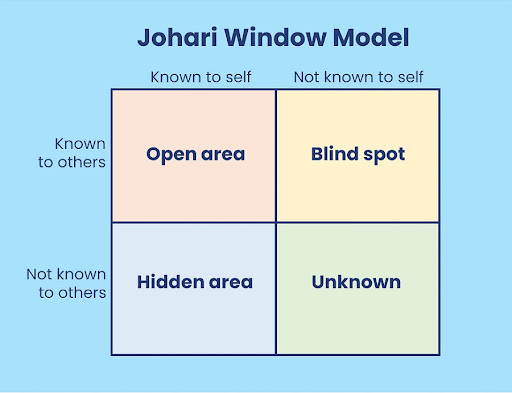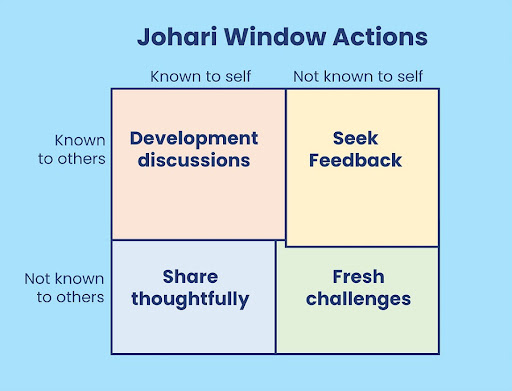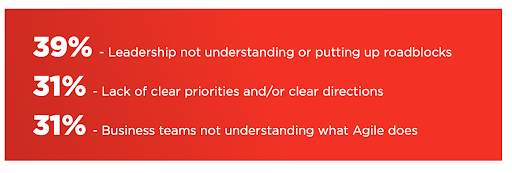POETIC Leadership Enables Lean-Agile Leadership, Part One: Personal and Organizational
This is the first in a three-part series of articles covering the POETIC Leadership approach to Lean-Agile leadership, authored by Alex Gray, a Lean Agile Practice Lead at Cprime. Click below to visit Parts Two and Three:
In Lean-Agile environments, the organizational culture must support Lean and Agile ways of working.
In the context of these articles, we will use the following definitions:
- Lean-Agile environments: organizations, products, or teams who do, or desire to follow Lean and Agile practices
- Culture: How do we do things, and how our people react to events
Without a supporting culture, any Lean-Agile adoption is likely to stay overly formal or limited to localized success. But, with the right supporting culture, the benefits of Lean and Agile can permeate the organization, creating better flow, increased efficiency, greater innovation, and the delivery of real customer value.
In the 2022 State of Agile Report, the survey shows that culture, leadership, and consistency are three key challenges in the way of successful Agile adoption in an organization.
To solve these problems, the culture needs to change. But, that’s a tricky concept.
John Seddon, an occupational psychologist and author, explains, “Attempting to change an organization’s culture is a folly, it always fails. People’s behavior (the culture) is a product of the system; when you change the system, people’s behavior changes.”
The Systems Thinking definition of a system is, “an entity with interrelated and interdependent parts; it is defined by its boundaries and it is more than the sum of its parts.”
Organizations are systems made up of people, teams, departments, services, tools, processes, products, and many other interconnected parts.
Leaders define these systems. So, to create a culture that supports Lean-Agile adoption, successful leaders must understand what it means to work in an agile way so they can help design and lead their system to be as Lean and Agile as it can be. These leaders can exist at all levels of the organization. But all of them must display a set of skills and capabilities that they can use to catalyze, enable, and support the process of system-level change.
They need POETIC Leadership:
Personal
- Self-awareness
- Mindfulness
- Powerful influencing
- Leadership style
Organizational
- Organizational structure
Emotional
- Deep respect for people
- Emotional empathy
- Psychological safety
Team Thinking
- Team motivation
- Team ownership
- Decentralized decision making
- Long lived teams
Intelligent
- IQ
- Lean-Agile
- Business decision making
- Domain knowledge
Curious
- Exploring
- Experimental
- Innovation
- Learning
- Growth mindset
- GEMBA
In this article, we will focus on the first two aspects of POETIC Leadership. To explore more, read parts two and three:
- Part Two: Emotional and Team Thinking (link coming soon)
- Part Three: Intelligent and Curious (link coming soon)
P – Personal Leadership
Personal Leadership involves how leaders act among the people they lead, and the impression their actions leave. Done well, it is leading by example. This is really important because it demonstrates the behavior the leader expects from everyone else. Personal leaders encourage strong stakeholder engagement, which is built through continuous communication to build trust, commitment, innovation and collaboration. When leaders exhibit the qualities and characteristics they want to see in their teams, they can inspire and motivate others to do the same. Team members develop trust and confidence, and are much more likely to follow an authentic leader.
Self-awareness
Leadership requires self-awareness. Good leaders have a conscious understanding of their character, behaviors, motives, and how these things affect their leadership abilities. To show self-awareness, leaders must understand their own strengths and weaknesses, so there is real value in spending time to research for yourself what you know, and what you don’t know. A common technique to help with this is Johari’s Window.
 |
 |
As a leader, knowing the areas that are unknown to you:
- Helps you focus on developing the skills and abilities that are most important to your role
- Helps you understand the impact your words and actions might have on others
- Guides your decision-making and subsequent actions
- Makes you more aware of the potential risks and uncertainties around a situation or decision
- Helps you to communicate more effectively and avoid causing harm or conflict
- Helps you build and maintain good relationships with your teams
- Helps you know when others are in a better position to make certain decisions
People are more likely to trust and respect leaders who are self-aware, and can show empathy and understanding.
Mindfulness
Effective leaders are mindful and intentional. Mindfulness is the practice of bringing your attention to the present moment without judgment. It involves paying attention to your thoughts, feelings, and sensations, and letting go of judgment and preconceptions.
The goal of mindfulness is to create and cultivate a greater sense of awareness and understanding of yourself, the world around you, and how that might impact your team members. Mindfulness mitigates reactive tendencies—a serious barrier to effective leadership. Some leaders lash out, others shut down, while some “go along to get along.”
Powerful Influencing
Leaders can have great power in organizations (often exhibited by a “command and control” leadership style). On the other hand, in an agile context, leaders should be powerful influencers; someone that supports physiological safety and who can use their ability to influence the thoughts, beliefs, and actions of others without always having to tell them what to do. If a leader is constantly telling people what to do or how to do it, the teams are always going to revert to that leader and ask them what to do. If a leader can use influence to get others to decide how to do things by themselves, then they’re going to create greater autonomy, which supports agility.
Leadership Style

Some common leadership styles are:
- Transformational leadership: Transformational leaders inspire and motivate others to achieve their full potential. They focus on creating a vision and a sense of purpose, and on empowering team members to take ownership and responsibility for their work.
- Servant leadership: Servant leaders prioritize the needs and well-being of their team members. They put the interests of the team ahead of their own and focus on supporting and empowering others to succeed.
- Charismatic leadership: Charismatic leaders are magnetic and inspiring. They have a natural ability to engage and motivate others, and they often have a strong personal following.
- Autocratic leadership: Autocratic leaders have a high level of control and decision-making power. They make decisions independently and expect their team members to follow orders without question.
- Democratic leadership: Democratic leaders involve their team members in decision making and encourage collaboration and open communication. They value the input and perspectives of others and strive to create a participatory and inclusive work environment.
O – Organizational
Organizational Leadership involves understanding how to align the organization to strategic vision and goals, and to create the right structure to deliver value to our customers and business effectively and efficiently.
Lean
Organizational Leadership uses Lean Thinking, which is a philosophy that emphasizes the continuous improvement of a process, the elimination of waste, and the optimization of efficiency in order to provide the highest possible value to customers. It involves empowering employees to promote transparency, identify and address in-efficiency in their work, and encourage a culture of continuous improvement within the organization. This can help leaders to create more agile and responsive organizations that are better able to adapt to changing market conditions and customer needs.
Value Stream Mapping
Organizational Leaders want to improve the flow of value through the organization. Value stream thinking is a fundamental mindset a leader needs for business success. A Lean Thinking technique leaders may use to improve the flow of work is Value Stream Mapping.
Karen Martin describes Value Stream Mapping as a practical and highly effective way to see and resolve disconnects, redundancies, and gaps in how work gets done. It involves creating a high-level diagram or map of all the key components of the production process—from requirements gathering to product delivery. The goal of value stream mapping is to quickly identify bottlenecks, ways to improve the flow of work, and non-value activities. Acting on these findings results in a reduction in cycle-time, which improves the delivery of value to your customers.
This could be a simple change in process, or you may need to redefine entire organizational structures. It can involve complex decisions, but making those decisions yields valuable benefits.
Organizational Structure
A Lean-Agile organizational structure is designed to be nimble, flexible, responsive, and adaptable. It is based upon the principles of Agile and Lean, including
- customer collaboration
- iterative and adaptive planning
- a value-centric approach
- continuous improvement
It may include product focused teams that are
- self managing
- cross functional
- possibly with a flat hierarchy with fewer levels of management
- empowered to make decisions and take ownership of their work
Lean-Agile organizations are designed to be fast-paced, respond to changes in the market and customer needs, and enable innovation. The goal of designing organizational structures is to enable efficient product delivery, and support collaboration, quick decision-making, and learning.
Systems Thinking
Organizational Leaders will leverage Systems Thinking, a way of thinking and a problem-solving approach that focuses on understanding how parts of their systems interact and influence each other, and how the system behaves and develops over time. It recognizes that systems comprise people, processes, organization structures, hierarchies, tools, and many other items that are all interconnected.
As a leader, you need to look at the big picture and consider the long-term consequences of decisions and actions in your systems; anticipate what might change and manage these complex interactions between systems. You need to be open-minded, curious, proactive, and able to adapt and learn from what is happening in your systems.
In Part Two of this series, we will address two more aspects of POETIC Leadership: Emotional and Team Thinking.





